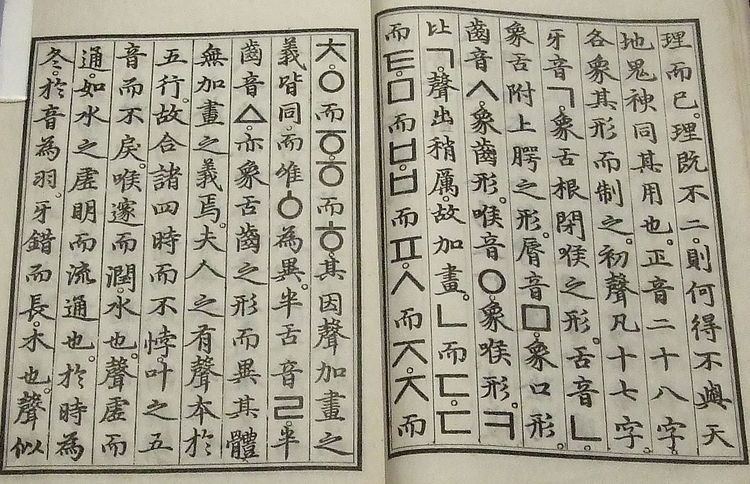Hangul 국어의 로마자 표기법 | Hanja 國語의 로마字 表記法 | |
 | ||
Revised Romanization gugeoui romaja pyogibeop McCune–Reischauer kugŏŭi romaja p'yogibŏp | ||
The Revised Romanization of Korean (국어의 로마자 표기법; gugeoui romaja pyogibeop; lit. "Roman-letter notation of the national language") is the official Korean language romanization system in South Korea proclaimed by Ministry of Culture and Tourism to replace the older McCune–Reischauer system. The new system eliminates diacritics in favor of digraphs and adheres more closely to Korean phonology than to a suggestive rendition of Korean phonetics for non-native speakers.
Contents
The Revised Romanization limits itself to the ISO basic Latin alphabet, apart from limited, often optional use of the hyphen. It was developed by the National Academy of the Korean Language from 1995 and was released to the public on 7 July 2000 by South Korea's Ministry of Culture and Tourism in Proclamation No. 2000-8, which cites these reasons for the new system:
Features
Basic principles of romanization are:
These are notable features of the Revised Romanization system:
In addition, special provisions are for regular phonological rules in exceptions to transliteration (see Korean phonology).
Other rules and recommendations include the following:
In Korea
Like several European languages that have undergone spelling simplifications (such as Portuguese, German or Swedish), the Revised Romanization is not expected to be adopted as the official romanization of Korean family names, and few people have voluntarily adopted it. According to a 2009 study by the National Institute of the Korean Language based on 63,351 applications for South Korean passports in 2007, for each of the three most common surnames Kim (김), Lee (이), and Park (박), less than 2% of applicants asked for their surname to be romanized in their passport by using the respective Revised Romanization spelling Gim, I, or Bak. Given names and commercial names are encouraged to change, but it is not required.
All Korean textbooks were required to comply with the new system by February 28, 2002. English-language newspapers in South Korea initially resisted the new system by citing its flaws, but all later gave in to government pressure. The Korea Times was the last major English-language newspaper to do so and switched only in May 2006.
North Korea continues to use a version of the McCune–Reischauer system of Romanization, a different version of which was in official use in South Korea from 1984 to 2000.
Outside Korea
Textbooks and dictionaries intended for students of the Korean language tend to include this Romanization. However, some publishers have acknowledged the difficulties or confusion it can cause for non-native Korean speakers who are unused to the conventions of this style of Romanization.
Consonant letters
ㄱ, ㄷ, ㅂ, and ㄹ are usually transcribed as g, d, b, and r when appearing before a vowel, and as k, t, p, and l when followed by another consonant or when appearing at the end of a word.
Special provisions
The revised romanization transcribes certain phonetic changes that occur with combinations of the ending consonant of a character and the initial consonant of the next like Hanguk → Hangugeo. These significant changes occur:
Phonetic changes between syllables in given names are not transcribed: 정석민 → Jeong Seokmin or Jeong Seok-min, 최빛나 → Choe Bitna or Choe Bit-na.
Phonological changes are reflected where ㄱ, ㄷ, ㅂ, and ㅈ are adjacent to ㅎ: 좋고 → joko, 놓다 → nota, 잡혀 → japhyeo, 낳지 → nachi. However, aspirated sounds are not reflected in case of nouns where ㅎ follows ㄱ, ㄷ, and ㅂ: 묵호 → Mukho, 집현전 → Jiphyeonjeon.
